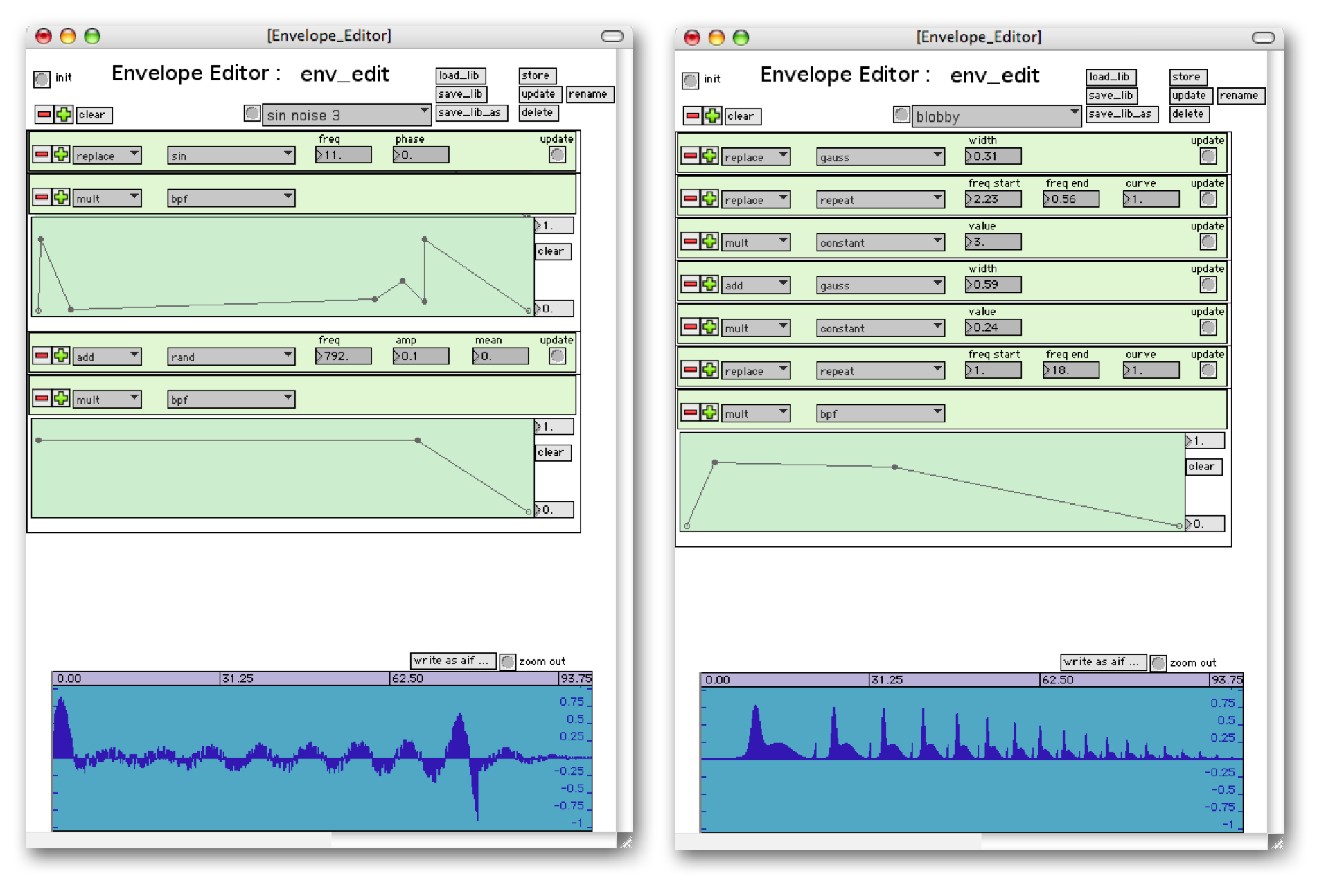
GMU is a software environnement dedicated to advanced granular synthesis. It includes both real-time synthesis tool in MaxMSP and offline granular analysis/synthesis techniques.
GMU is a software environnement dedicated to advanced granular synthesis. It includes both real-time synthesis tool in MaxMSP and offline granular analysis/synthesis techniques.
GMU for MaxMSP is a set DSP objects and patches for advanced real time granular synthesis.

DSP Objects
bufgranul~: sound multi buffer granulation with signal form parameters and buffer based envelope.
livegranul~ : live granulation with signal form parameters and buffer based envelope.
singranul~ : sinusoidal granulation with signal form parameters and buffer based envelope.
Grains are triggered either by signal zero-crossing or messages.
Each grains can be individually panned on 1-2-4-6 or 8 outputs.
These objects can handle large polyphony of grains ( 512 grains on 2.5Ghz macbook pro ~ 50% dsp).
Random Distribution Patches
![]()
Enveloppe Editor
It was interesting to take advantage of system abstraction synthesizer envelope (envelopes are defined as a table of values). Indeed, the shapes of envelopes directly influence the timbre of the sound and editing extends the sonic possibilities. We have developed a modular system to create envelopes. This is actually a « stack » of generative or transformative functions which combines themselves in different ways.
functions is one of :
Hanning : hanning window
Hamming : hamming window
Blackman : blackman window
Gauss : gauss window
Sin, Cos : sine/cosine generator
Rand : noise generator
Expodecay : exponential decay
Bpf : breakpoint function
Constant : constant
Repeat : repeat effect ( with or without acceleration )
Smooth : smooth effect
Pow : pow effect
Translate, rotate, flipY : affine transformations
Application method is one of :
Replace : replace data
Mult : multiply the result with previous data
Add : add the result with previous data
The editor allows saving combinations of functions in pattr compatible presets recallable by the synthesizer. The figures below show two examples of combinations.
